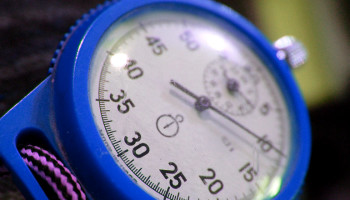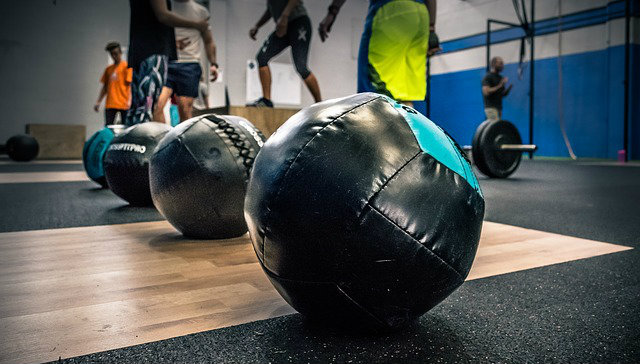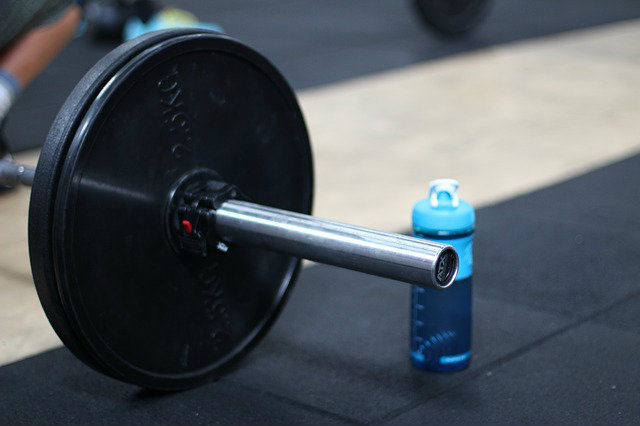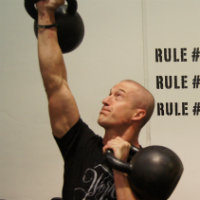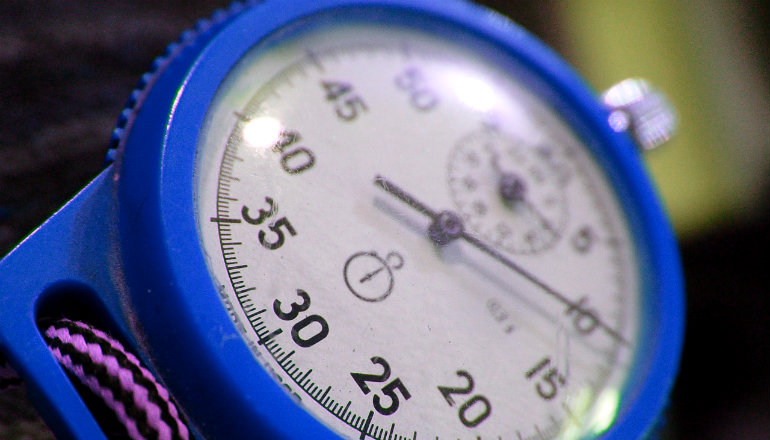 Reading Time: 6 minutes
Reading Time: 6 minutes10,000 hours. That’s the number it is said to take to master something. 10,000 hours of hard work to get world class.
But what if you don’t want to be world-class as an athlete — what if you just want to be in really good shape? How many hours does that take?
If we start with what 10,000 hours might look like broken down into a weekly target, we can work our way backward and figure out the hours you need to put in to achieve your fitness goals — as well as the most effective thing to do during those hours.
Why 10,000 Hours Is Unrealistic
If you did ten hours of training per week, you would accumulate 500 hours in a year. At that speed, it’ll take you twenty years to reach your maximum potential.
If you do twenty hours per week, it’ll take you ten years. That works out to three hours of training a day for the next ten years. Or, more likely, it’s two hours a day on weekdays and longer on weekends when you have more time. So say goodbye to a social life for the next decade because all your weekends are booked up with training or recovering.
And since most world-class athletes reach their physical peak in their mid-twenties, it’s reasonable to assume it took them more like fifteen years to get there simply because ten-year-olds aren’t typically training twenty hours a week.
So, if you want to be the absolute best you can be, you need to have started when you were about ten years old and have devoted an average of fifteen hours per week to your cause for a good fifteen years.
But that’s not realistic for many people. You know, those people with jobs and kids. And who aren’t currently ten years old.
What the Gym Looks Like for Regular People
Most people begin their fitness journey at about the same place. They try to do some exercise in the gym three days a week for about an hour at a time.
That nets them three hours per week or about 150 hours a year. When most people consider that volume — and compare it to something like 10,000 hours and/or fifteen years — they think they’re not working hard enough. They then try to increase the intensity to make up for the lack of hours through the use of things like interval training. While the intention is correct, the use of intensity to bring about an increase isn’t.
Most of us don’t train to become the best at anything. We train so we don’t die of a heart attack and so we look good naked to our partner or prospective partner. While the functional training revolution has done a lot to improve many facets of training, the reality is that most people just want to lose some fat and be healthier — and intervals aren’t the best method for that.
The Problem with Tabata Intervals
The most famous interval method is the Tabata program. Along with being the most popular, it is also the most poorly used. It was originally intended as a method of rapidly increasing VO2max in elite athletes. It was never intended as a fat-loss regime.
A Tabata workout will burn a lot of calories. About fifteen calories a minute, actually. Over an hour, that would give you a tremendous boost to your fat-loss goals.
However, you can’t do Tabata intervals for an hour.
In fact, most people can’t even do the correct format for the full four minutes the program was designed for. And doing those four minutes well only burns 60 calories anyway. There are 230 calories in an order of small fries from McDonald’s to give you context.
In contrast, if you just went for a walk for an hour, you’d burn 100 calories.
So, let me ask you this: would you rather do a year of walking for an hour or a year of lung-searing, near-death Tabata intervals?
The difference between the two approaches at the end of the year will be negligible, but if you go with the intervals, you won’t get the benefits of vitamin D from being outside or the social aspect that can come from walking.
Personally, I vote for walking.
Not convinced? Let’s go back to the math:
- Walking for sixty minutes daily will give you another 250 hours of training for the year.
- The Tabata intervals will give you only another 16.5 hours (four minutes a day performed five days a week).
Suddenly, with no huge increase in effort, you’re up to 400 hours a year (250 hours of waking plus your original 150 of gym time).
400 hours per year is starting to give us something we can work with. Over a ten-year period, that gets you to roughly half of what you need to get to your maximum potential.
50% Might Be Your 100%
The interesting thing about this halfway mark is that 50% of your absolute potential will usually put you in some pretty good company as far as general fitness:
- 50% of a world record in the deadlift would be a 500lb deadlift.
- It’s a three-hour marathon.
- It’s a sub-twelve-hour Ironman triathlon.
- It’s a body-fat percentage of less than 11% for men and 15% for women (based off average statistics).
I don’t know about you, but a 500lb deadlift, three-hour marathon, and 11% body-fat percentage all sound pretty good to me — and I’d be ecstatic if most of my clients got there.
More Is Better Training Sessions
Now, back to our starting point of three gym sessions. Again, just like you want to avoid intervals (i.e. doing the bare minimum) for the most part you don’t want to waste your time doing the bare minimum in the gym either.
You don’t want to do fewer sets. You want more. No MED (minimum effective dose) here. There are plenty of studies that show more sets are better for both strength and hypertrophy, such as this one and this one.
And when it comes to the best rep ranges to choose, the best rep range is likely going to be using a weight that allows you to perform 6-10 reps on the first set. Your standard gym workout should have 3-5 exercises performed for 4-6 sets of 6-10 reps. If you hit this hard three times a week, you’re going to see some pretty big changes in a year.
More Really Is Better
The big lesson here?
Volume is the key exercise variable to manipulate — not intensity.
While it is possible to add load (intensity) to a workout, you will quickly find you reach a point where you can no longer do so safely.
Volume, on the other hand, as evidenced by our elite contemporaries, can be increased on a much greater scale and for far longer. If in doubt, do more.
